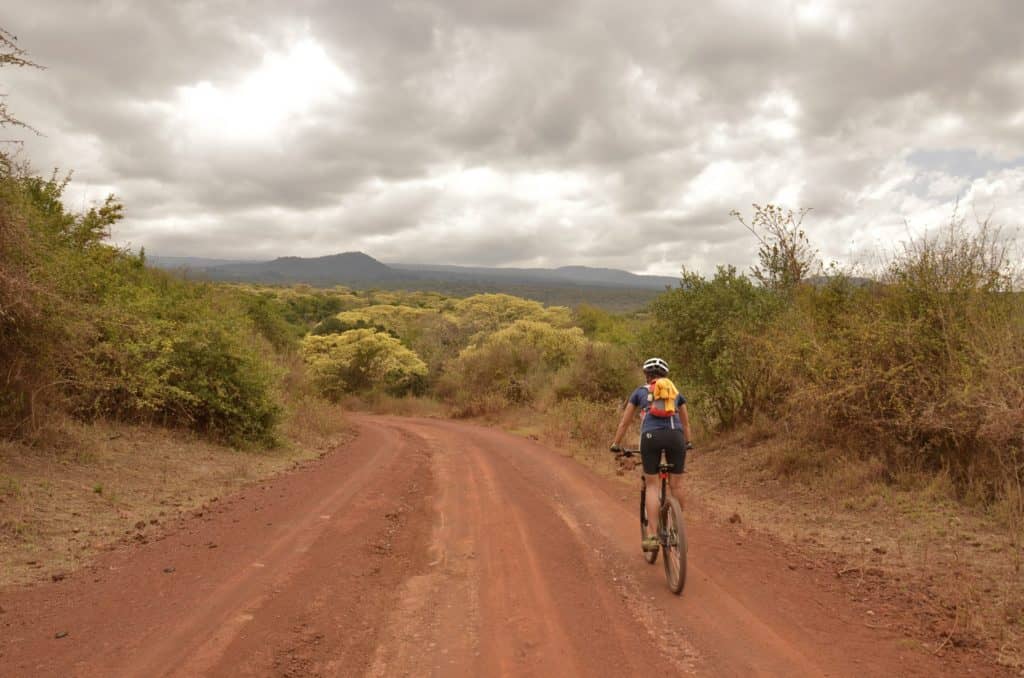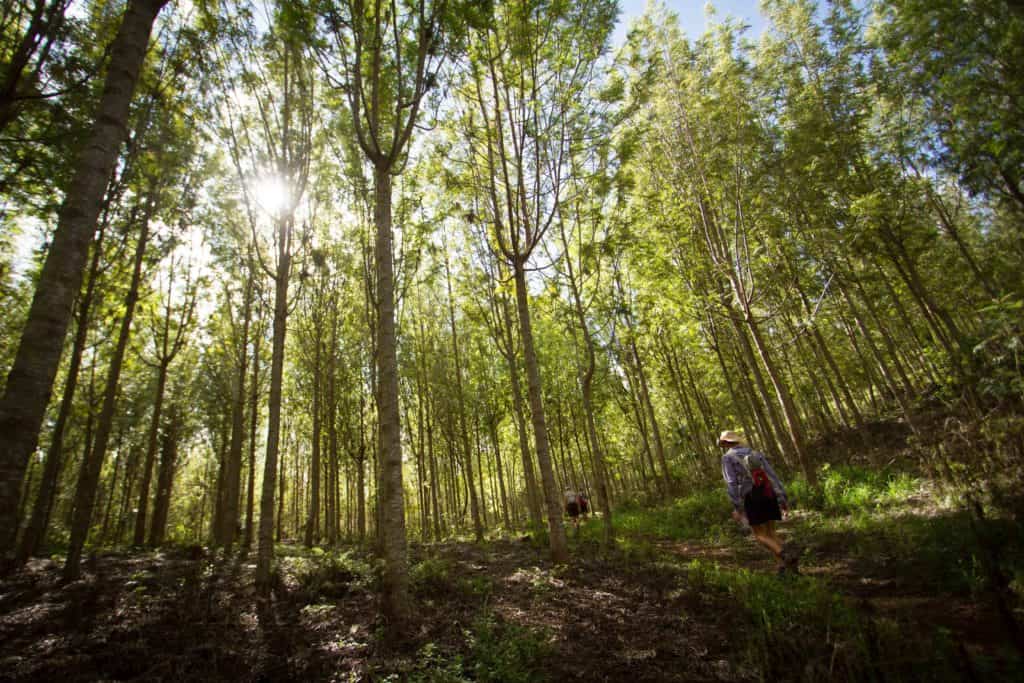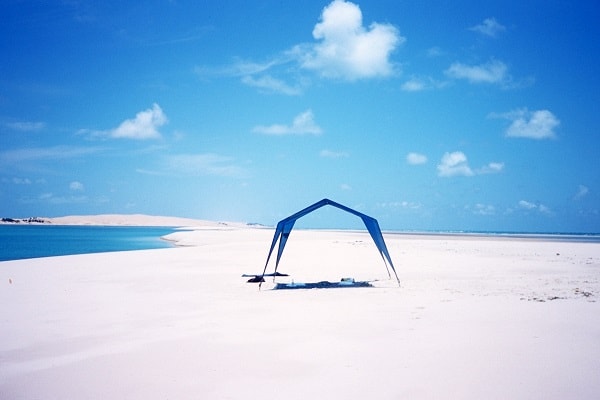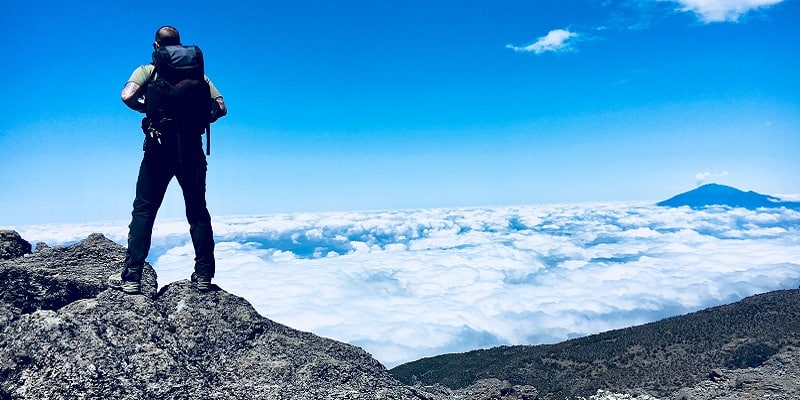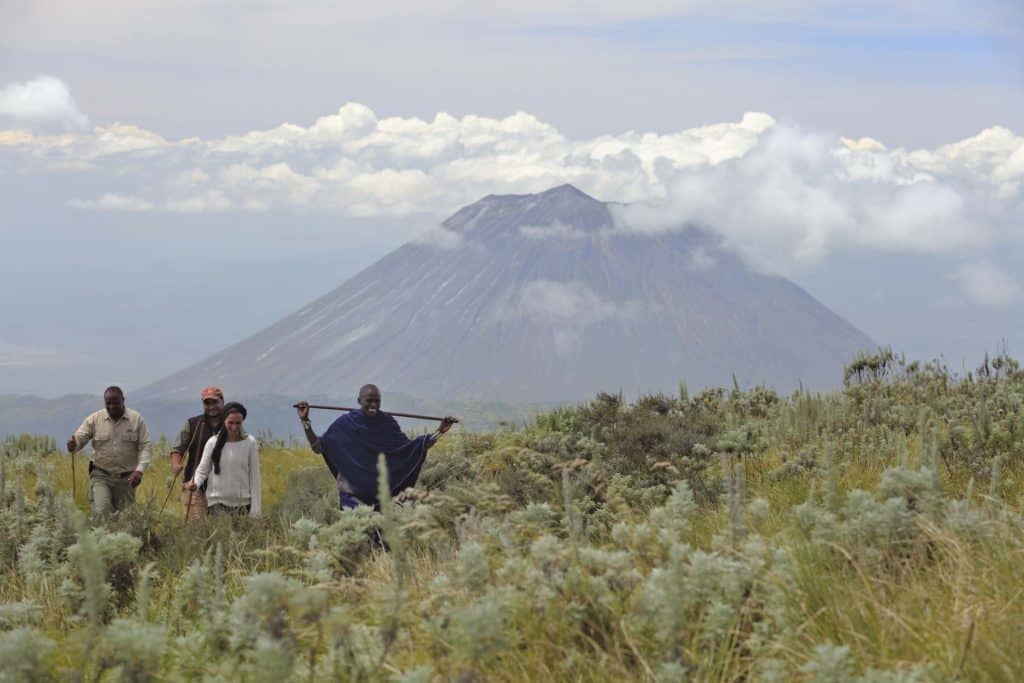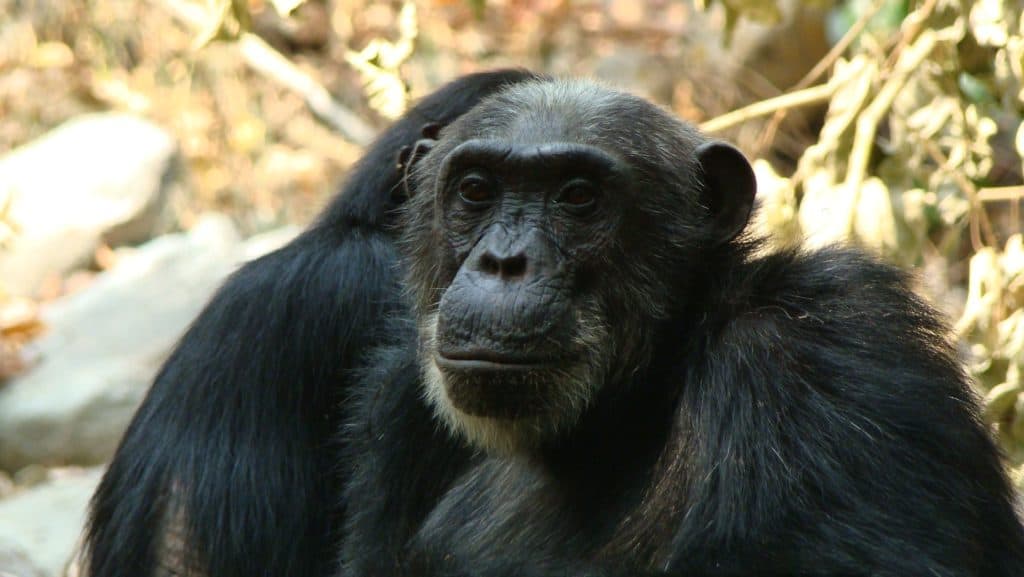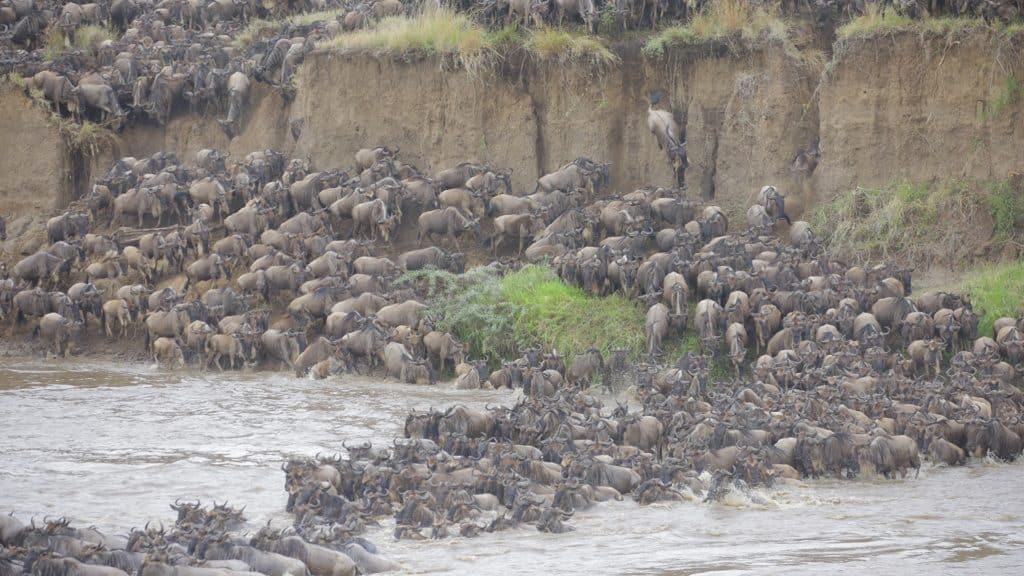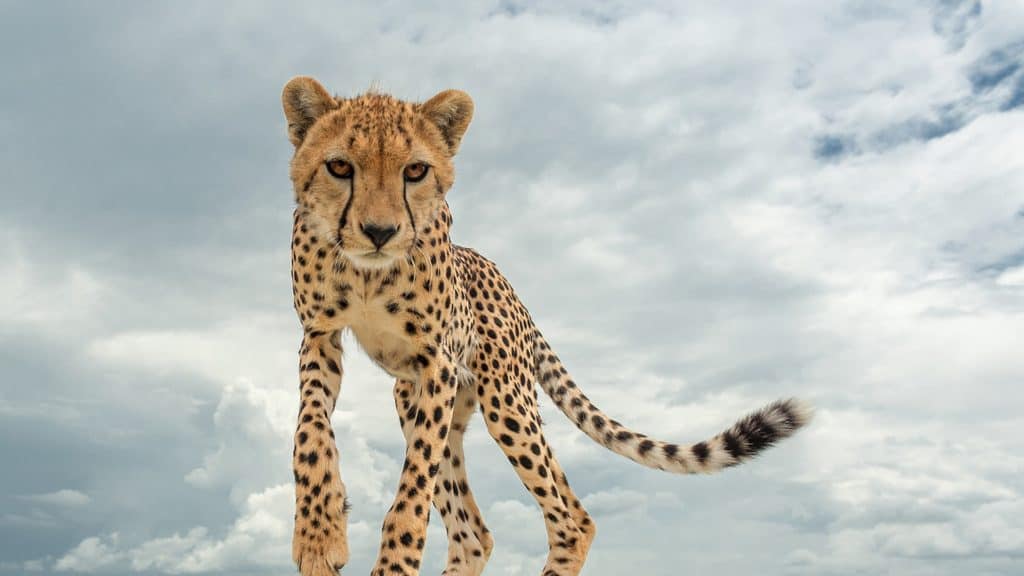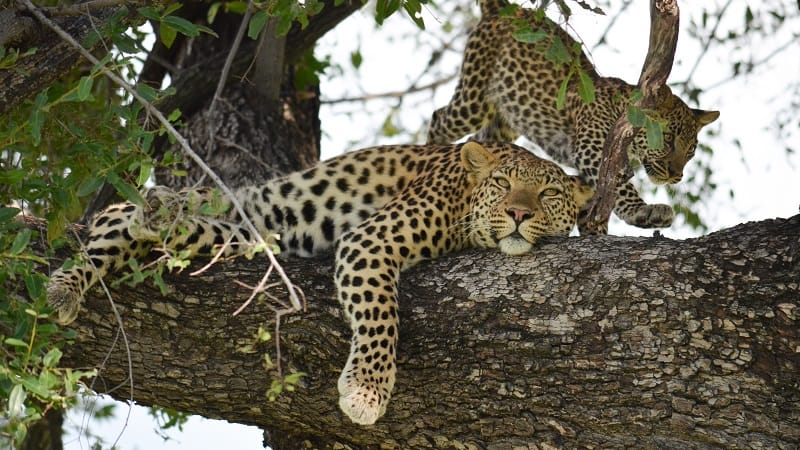Tanzania
The Serengeti and Beyond:
Explore Untamed Wilderness
For many, Tanzania offers their dream safari: staying under tented canvas and traversing wide open plains teeming animals. Tanzania also holds a special place in our hearts as the home of The Wild Source Tanzania. With nearly 30 years of guiding experience, Managing Director Deo Magoye has expertly developed our elite guiding team, a fleet of customized safari vehicles, and a full ground operations team based in Arusha.
The majority of tourism takes place on the Northern Circuit, which includes the Serengeti, Ngorongoro Crater, Lake Manyara, and Tarangire. A special feature of a Northern Circuit safari is that travelers will have a private guide and vehicle that stays with them throughout their entire safari. Northern Circuit safaris are typically planned around the movements of the Great Migration. Alternatively, safari destinations in southern and western Tanzania are considered some of Africa’s best kept secrets. These less crowded parks can provide unique experiences in remote wilderness, such as trekking through jungles to observe chimpanzees.
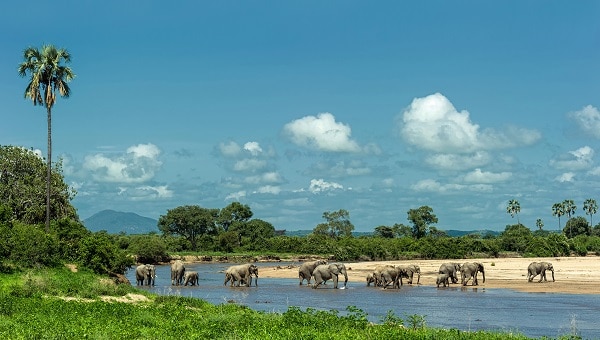
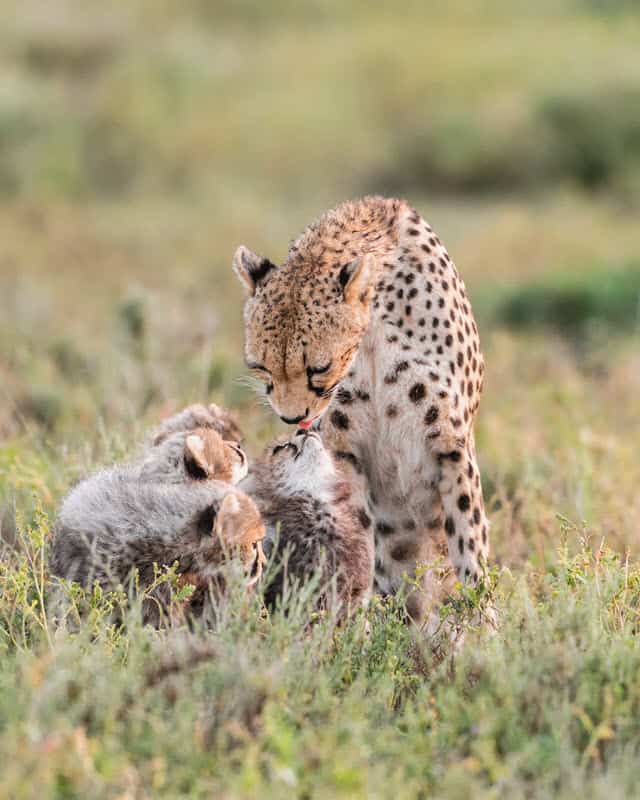
Tanzania Sample Safaris
Cycling Circumnavigation of Kilimanjaro plus Biologist Safari (Origins Collection)
This 95-mile bicycle tour passes through colorful mountain villages, past lush coffee and maize farms, into cool mountain forests, and then out into the drier and sparsely populated savanna on the northwest side. Enjoy a mode of travel that allows you to experience more personally the sights and sounds of life on Kilimanjaro. Top your adventure with a world-class safari in the Serengeti.
Hike the Foothills of Kilimanjaro plus Biologist Safari (Origins Collection)
There are more ways to experience Tanzania's most famous mountain than summiting it! Trek through the foothills of Kilimanjaro for an incredibly authentic cultural and wilderness experience, propelled by your own feet through this incredible region. Cap off your off-the-beaten-path hiking adventure with 3 days on safari in the world famous Serengeti, seeking out big cats, the Great Migration and dozens of iconic safari species and astounding bird life. You will have the special experience of being guided by a local wildlife biologist at your authentic tented camp.
Bush & Beach Honeymoon
Combine wildlife, culture, luxury and relaxation on this ultimate East Africa bush and beach honeymoon (or romantic anniversary trip)!
Mt. Kilimanjaro Trek: The Roof of Africa
Mt. Kilimanjaro to experience the views from the Roof of Africa Trip Details: At 19,341 feet (5,895 m), Mt. Kilimanjaro is the highest mountain in Africa and the world’s highest free-standing mountain, giving it the name, the “Roof of Africa.” There are many trekking companies and routes to choose from. We have selected a route that ensures top quality guiding and supports a locally-owned business. You will journey through the life zones of Mt. Kilimanjaro from the less-used, more scenic trails that offer excellent opportunities for acclimatization and optimizes for your chances to summit.
Wonders of the Crater and Trek to Lake Natron with optional Serengeti Biologist Finale (Origins Collection)
Our Tanzania Trekking and Wonders of the Ngorongoro adventure is the very epitome of getting off the beaten track. This adventure takes you on foot through the volcanic landscapes of northern Tanzania, traveling through areas that are impossible to reach by road.
Tanzania Frontier
This safari is the ultimate trip for those who truly want to get away from it all, exploring some of Tanzania's less-visited gems.
Quintessential Tanzania: River Crossing Season
With the Great Migration of nearly 2 million animals in the area, the Northern Serengeti is the stage for one of nature's most famed events - the dramatic migration crossings of the Mara River.
Wildebeest Calving and Cheetah Conservation Safari
True to our biologist background, on this safari you will have an active role in cheetah conservation as you help record data with an interactive tablet app and share your findings with local wildlife biologists.
Ultimate East Africa: Exceptional Guiding in Northern Tanzania and the Masai Mara
This incredible itinerary features East Africa's top guides on a private safari through Tanzania and Kenya.
Top Tanzania Safari Locations
Tanzania Safari Regions

Gombe Stream National Park
Overview
Location
It is also possible to fly from Dar es Salaam to Kigoma or from Arusha via Mwanza to Kigoma. There are more flexible options, and potentially cheaper flights, to reach Gombe which might make it a more affordable chimp trekking option than Mahale.
Wildlife
Gombe is primarily about chimp trekking. There is also excellent olive baboon viewing and potential for a couple other primates as well as secretive forest mammals like bush bucks. Along the lake are excellent birds like African fish-eagles and palm-nut vultures.
Best Times to Go

Katavi National Park
Overview
Katavi National Park is likely Africa’s best-kept safari secret! In most countries this park would be the star attraction. Due to its remote location and the famed migration in the Serengeti, this park has been an afterthought, largely reserved only for safari aficionados.
When there are that many buffalo, lions are sure to be well represented too. Uniquely, some species that can normally be shy and difficult to observe like roan and sable antelope, can appear curious in Katavi and sometimes behave as if they have never seen a game drive vehicle.
Katavi is a great place for those who want to see the wilds of Africa in a manner that approximates what early explorers would have seen with wildlife not so habituated to constant game drive vehicles.
Location
There are scheduled flights to this remote park just twice a week. Most guests either come for three- or four-night stays, with some staying a whole week. The flight path from Katavi continues on to Mahale, thus the two destinations are frequently paired together.
Wildlife
The concentration of large animals in Katavi is staggering. This park rivals anywhere for sheer quantities of buffalo, hippos, and crocodiles. Late in the dry season, groups of hippos and crocs pile shoulder-to-shoulder by the hundreds in the remaining water, making quite a spectacle.
Best Times to Go
Katavi is at its best during the dry season of June to November. In most dry season parks, conditions improve as the season progresses. In Katavi, many use this strategy to see the hippo and croc concentrations. We also recommend the early part of the season when there is still so much to see; the river is full and buffalo bulls line the banks.
This park is worthwhile outside of the dry season for its spectacular nature and the adventure the park delivers. During the low season, it would be wise to combine Katavi with the Serengeti for optimal game viewing along with adventure and nature’s beauty.

Lake Manyara
Overview
Lake Manyara is a nice little park that is typically visited on the northern circuit. It is good for highly habituated animals and especially birds. There are over 400 species of birds in Lake Manyara National Park, making it a wonderful destination for those looking to do some birding.
Location
Lake Manyara National Park is located in northern Tanzania, nestled between the Ngorongoro Conservation Area and Tarangire National Park. The lake is located about 80 miles west of Arusha and is around 125 square miles in size.
Wildlife
Best Times to Go

Mahale National Park
Overview
In 1965, while Jane Goodall and the chimps of Gombe Stream gained worldwide fame, Japanese researcher Toshisada Nishida was running a similar study in Mahale.
Mahale is 30 times the size of Gombe Stream and has much greater diversity of plants and animals, including many species that have disappeared from Gombe Stream. Tourists on chimp treks typically spend time with M Group, which numbers about 60 individuals.
Location
Mahale National Park is 623 square miles, located in the far western part of Tanzania – on the shores of Lake Tanganyika. There are two flights a week, so guests typically visit for 3 or 4 nights.
Wildlife
The chimps can be loud, energetic, and dynamic. This makes viewing extremely exciting, and your hour each day in the company of chimps will provide amazing observational opportunities, possibly revealing behaviors that are very familiar and shared with humans. Time with chimps may resonate in your soul forever.
Seven other primate species may be seen, including both red colobus and black and white colobus monkeys. There are many bird species, which are often heard more than seen due to the thick jungle. One nice surprise is a stunning array of butterfly species.
Best Times to Go

Ngorongoro Crater
Overview
The crater is believed to have been formed by a volcanic eruption 2-3 million years ago. The resulting caldera covers over 100-square miles. The heavily-forested rim can soar up to 2,000 feet above the crater’s floor, which is primarily grassland.
Location
Ngorongoro Conservation Area is located to the east of Serengeti National Park, 70 miles west of the city of Arusha. The crater itself is located another 20 miles or so into the conservation area.
Wildlife
Best Times to Go
The best time to go to Ngorongoro Crater is year-round, but it can be quite busy, particularly during the high season from June – October.

Ruaha National Park
Overview
Ruaha National Park is Tanzania’s largest national park. Ruaha is considered by many to be the definitive game park. It lies at the transition point of the northern acacia savanna and the southern miombo woodlands biomes, resulting in a tremendously diverse mix of East African and Southern African wildlife. For example, this is a rare place where striped hyena from the north, brown hyena from the south, and the wide-ranging spotted hyena all coexist.
The park is known for evocative scenery with rugged and highly variable terrain. The Ruaha River provides the only reliable source of water for a huge area, leading to intense wildlife viewing where animals are forced to come to the limited water during the dry season.
Despite the biological richness and dramatic landscape, the park only has five permanent camps/lodges and two seasonal tented camps for a total of about 100 beds (the Serengeti has at least seven times this amount). It is not unusual to go for long game drives in this great park and encounter no other vehicles.
Location
Ruaha National Park is nearly 4,000 square miles in size and is located in the south-central portion of Tanzania, around 150 miles northwest of Selous Game Reserve. Together Ruaha and Selous form the Southern Circuit, a quieter and less crowded alternative to the Northern Circuit.
Wildlife
Ruaha contains Tanzania’s best concentration of elephants, thousands of buffalo, large prides of lions, and surprisingly good populations of cheetah, leopard, sable, and roan antelope. Waterbuck, impala, eland, ostrich and giraffe are also seen. Black rhino are present but hard to see.
African wild dogs, spotted and striped hyena, black-backed jackal, and bat-eared fox are all present in good numbers. Over 570 species of birds have been recorded.
Best Times to Go
Ruaha National Park is best during the dry season when large quantities of animals move in. As the landscape dries up, the Ruaha River becomes the only major source of water. Quality game viewing occurs from June to November. Ease of game viewing typically improves throughout the season until the first major rains (usually in November).
Solid game viewing remains possible through January, after which much of the wildlife disperses far from the park’s core.

Selous Game Reserve
Overview
Located in southern Tanzania, Selous Game Reserve is the largest game reserve in all of Africa. However, photo tourism only takes place in the northern area of the reserve. Game here is less habituated than in other parks, which provides a more wild view but not as many diverse, intimate sightings.
Location
Selous Game Reserve is a massive reserve (21,000 square miles) located in the southeastern part of Tanzania. Access is most commonly by scheduled or private charter flight from Dar es Salaam. Flights also operate from Arusha, Zanzibar and other parks.
Wildlife
There are also large populations of lion, leopard, hartebeest, and greater kudu, and smaller numbers of African wild dog, impala, giraffe, zebra, wildebeest. There is a small number of black rhino.
Best Times to Go

Serengeti National Park
Overview
Serengeti National Park is perhaps the most famous park on Earth and is the quintessential image of safari and Africa for most people. The Serengeti is home to The Great Migration, consisting of millions of wildebeest, zebra, and gazelles which attract predators such as lions, spotted hyenas, and cheetahs.
Vehicle crowding can be a small issue as you must stay on roads and be back at camp by nightfall in most areas of the park. This issue is alleviated during the calving season since the main action takes place in the Ndutu area where off-road driving is allowed. With thousands of wildebeest being birthed within a few weeks and incredible predator interactions, the calving season can be a unique option.
While the Serengeti is definitely not as exclusive as low tourism destinations, the sheer numbers of animals seen simply cannot be matched.
Location
Wildlife
Best Times to Go
Serengeti National Park is a stellar destination all year round. We will advise you on the best locations to stay depending on the time of year you travel.

Tarangire National Park
Overview
Location
Tarangire National Park is 1,100 square miles, located just south of Lake Manyara National Park and about 75 miles southwest of Arusha.
Wildlife
Tarangire is best known for its large breeding herds of elephant, but is also home to large numbers of Grant’s and Thomson’s gazelle, impala, hartebeest, reedbuck, mongoose, giraffe and zebra. It is also a great place to see lions in trees. One of the more unique species here is the oryx, which is typically found in desert areas in southern Africa. Over 550 species of birds have been recorded, including magpie shrike, coqui francolin, Fischer’s lovebird, lilac-breasted roller, white-bellied go-away bird and lappet-faced vulture. There are also cheetah, leopard and African wild dog in the park, though they are harder to see.
Best Times to Go
The best time to go to Tarangire is during the dry season from July through September. Wildlife concentrations are highest during this time, resulting in incredible sightings.

Zanzibar
Overview
Zanzibar is an exotic former trading post on the East Africa spice route known for its history of spice trading, unique mix of African and Arabic cultures, and its world-class coral reefs.
The historic Arabic architecture of Stone Town, and the Spice Tour that travels to nearby spice gardens and farms, are both unique highlights of Zanzibar.
Popular water activities include snorkeling, scuba diving, kayaking, sailing on a traditional ‘dhow’ boat, kitesurfing and enjoying the beaches, to name a few.
Location
Zanzibar is located just 20 miles off the east coast of mainalnd Tanzania, accessed most easily by scheduled flights from Dar es Salaam and Arusha. Safari goers can easily end their trip with a beach extension to Zanzibar, with new daily connecting flights from the Serengeti to Zanzibar.
Wildlife
Marine wildlife in the waters off Zanzibar’s coast includes a wide variety of brightly colored reef fish, dolphins, green turtles and the whale shark.
The Jozani Forest is home to the Zanzibar red colobus monkey – one of the most rare and endangered primates in Africa. The rare Fischer’s turaco, paradise flycatcher and banded wattle-eye are highlights when it comes to bird species.

Pemba Island
Overview
Pemba Island is the smallest of the three main Tanzania islands but offers some of the best scuba diving in all of Africa and the world. The Pemba Channel runs between Pemba and mainland Africa, with depths up to 2,625 feet and sheer underwater walls with drops of 150 to 600 feet. Lodging is more simple and rustic, and the island is laid-back and easygoing. And a fun fact – Pemba Island yields around 70% of the world’s cloves!
Location
Pemba is located 16 miles north of Zanzibar Island, near the border of Kenya. Access is by boat transfer from Zanzibar to Pemba Harbor, or a scheduled or charter flight from Zanzibar.
Wildlife
Highlights for divers often include eagle ray, grouper, tuna and a variety of tropical fish. There are also bottlenose and spinner dolphins.

Mafia Island
Overview
Mafia Island is a more remote, exclusive and serene island experience as compared to the bustling Zanzibar. It is widely recognized as one of the best diving spots in the Tanzania islands and the Indian Ocean.
Aside from diving, other popular activities include fishing, wildlife viewing in the interior forests, snorkeling, sea kayaking, dhow cruises, and tours of historic ruins.
Location
Mafia Island is located south of Zanzibar island. Access is by scheduled or charter flights from Dar Es Salaam.
Wildlife
Large portions of the southern coastline and surrounding waters are protected by Mafia Island Marine Park. Over 400 species of fish have been recorded, and dugongs, reef sharks and dolphins are also seen. From October to March, visitors can snorkel or scuba dive with whale sharks. From June to September, sea turtles are hatching on the beaches. In August and September, humpback whales can be spotted migrating past the island.
In the island’s interior forests, species that can be spotted include a stunning variety of bird life, monkeys, antelope, wild pigs, bushbabies and even hippos.
